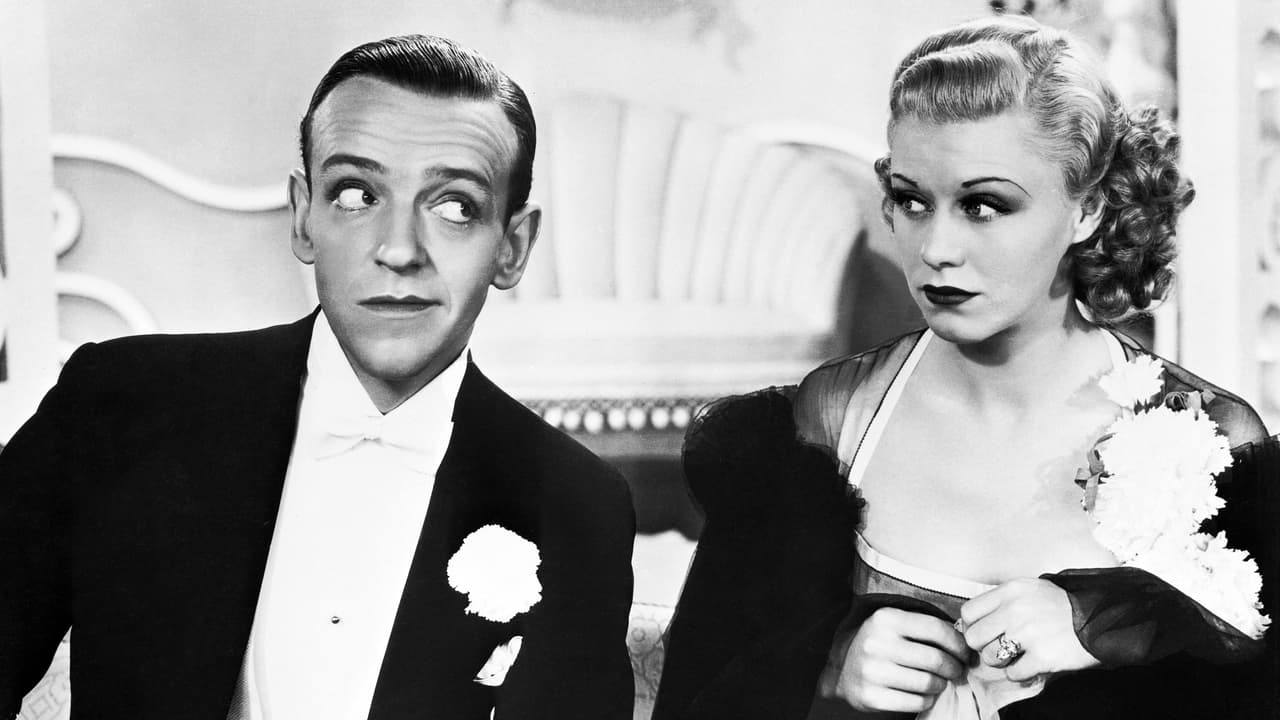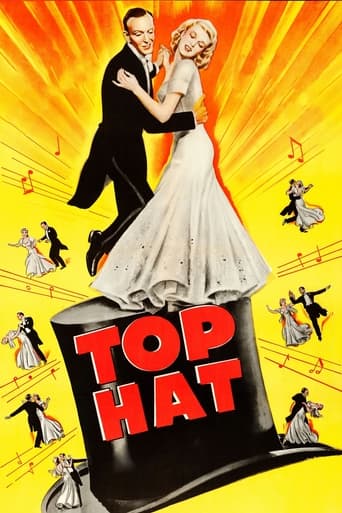

Overrated
... View MoreHow sad is this?
... View MoreGood story, Not enough for a whole film
... View MoreBeautiful, moving film.
... View MoreWatched it for the first time on 15/05/18. The film is b/w, and it's wonderful, its grandeur awesome, overall I think its an intelligent musical entertainment and not dated.
... View MoreFred and Ginger dance – that pretty much sums it up. The plot, the standard 'mistaken identity' shtick, allows the stars to meet cute and the supporting team to provide comic relief but is really just an excuse to string together a number of great musical numbers, including the iconic "Dancing cheek to cheek" (feathers and all). Edward Everett Horton is great as Astaire's buddy and mistaken alter-ego (I can't hear his voice without thinking about "Fractured Fairy Tales"), as is Helen Broderick, who plays his flippant wife. This is a film full of tuxedos and gowns, spontaneous yet fully orchestrated singing, extravagant sets, improbable situations, silly but endearing double takes, and Astaire's classic mix of graceful, athletic dancing. "Top Hat" is all romantic fantasy with not a hint of intruding reality and as such, it's perfect way to pass a couple of hours.
... View MoreFrankly, while Fred Astaire and Ginger Rogers had wonderfully chemistry, I don't feel the Astaire/Rogers films were his best movies. Band Wagon, for one, was much better, and in terms of dance partners, Eleanor Powell was much more impressive than Rogers.Still, I watched all the Astaire/Rogers films when I was in college, and I enjoyed them, less for the dancing (I really like Astaire best in his novelty numbers, like dancing with a coat rack or firecrackers) than with the goofy comedy of supporting players like Edward Everett Horton.Top Hat is a very good example of the Astaire Rogers formula. Astaire and Rogers coo and snipe, supporting players are amusingly befuddled, the story is an amusing though remarkably dopey comedy of errors, and there is quite a lot of dancing. The songs by Irving Berlin are some of his best, and the dancing is, of course, excellent, even though I'm really more a fan of Gene Kelly's earthier approach.If you like Astaire/Rogers movies, you'll like this one. If you've never seen one, this is a good place to start. I don't consider it a great movie by any means, but it is consistently entertaining.
... View MoreThis film will leave you screaming and dancing with delight! This film seriously reeks with class. Fred Astaire's character and Ginger Rodger's character are both extremely likable and cool. The dancing is truly amazing, you will suddenly feel very jealous of Mr Astaire after watching this movie. He makes everything look so easy when he dances. His voice seems really silky and soft when he sings and there is one Tap Dancing scene which will leave your tongue hanging out from your mouth. I must say first that this film is light. Don't bring your notebook out and start writing notes on the themes and ideas expressed through the movie, because you won't enjoy it. The plot is slight and over all a bit of nonsense. But it seems to take itself super seriously, but that, I think, is all part of the fun. There are only a few characters, they seem to breakthrough the stereotypes which is good. The art Deco style of London and the beauty of Venice is captured perfectly and I do get distracted sometimes by the background! I must say this, that this film is old. So, the camera shots are simpler, the acting isn't in your face and the film may feel a little slow, but this is part of the charm. There are only a handful of songs, sung by Astaire and Ginger, but they a good songs, including Cheek to Cheek and Top Hat, White tie and Tails. Great popcorn movie to enjoy with a girl or a family member!
... View More